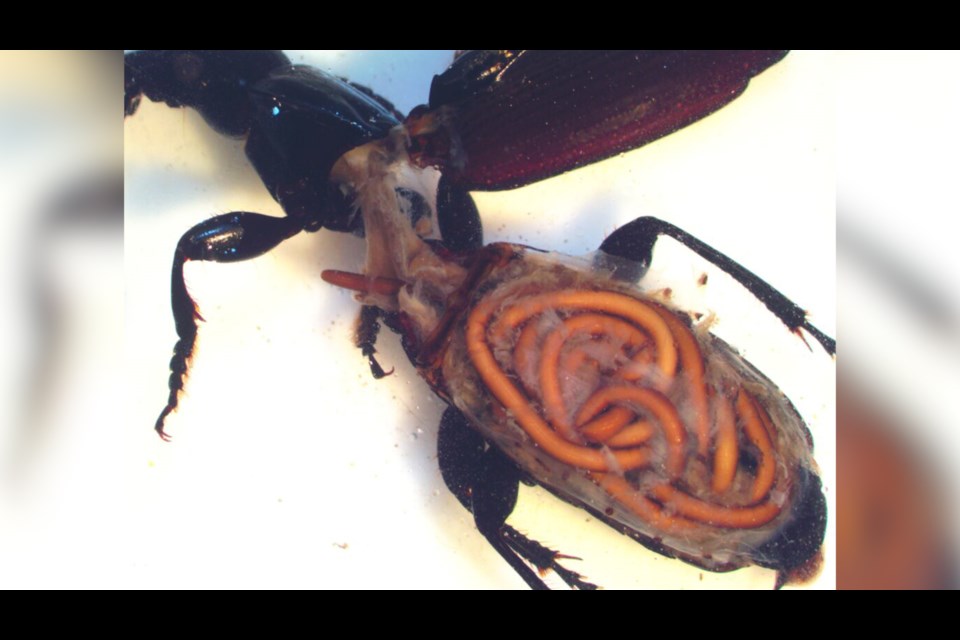As people in British Columbia prepare for Halloween, scientists are sharing some ‘natural' horrors that live among us.
From mind-controlling worms to eye-bulging fungus, there are many gruesome parasites that the University of British Columbia wants to ‘fill’ people in on.
Good thing for us humans, these natural horrors don’t seem to want us.
Turns out there are parasites that will suck all of a plant's nutrition.
Sean Graham is a professor in the botany department and explains how the Balanophora plant will induce their host plant to grow into the body of the parasites in an underground stem. The stem is composed of mixed host and parasite tissue.
“The parasite gets all of its nutrition from its host rather than sunlight, and so has shed many genes related to major life processes, including photosynthesis,” says Graham.
This parasite does not infect humans, according to the experts.
Meanwhile, an eye-bulging fungus can spread to people’s brains.
Zygomycosis is a fungus that lives in soil and causes the rare disease rhinocerebral mucormycosis when people breathe through their noses.
Mary Berbee is also a professor in the botany department and explains that the micrograph of zygomycosis fungi can infect humans, but it is very, very rare.
"The spores become implanted in the nose and threads from the fungus known as ‘mycelium’ grow through a person’s nasal passage and into their eye sockets and brain,” says Berbee.
"The growth causes the nose to bleed, sinuses to swell, and eyes to bulge out. The disease spreads rapidly and is often fatal."
This fungal disease was common among armadillo hunters. Berbee says people who are immunocompromised, like diabetics, are most at risk.
A manipulating parasite is a real fright that takes over creepy crawlers.
Hairworms infest insects that live on land in crickets, ground beetles and grasshoppers, according to Jeff Doherty. This parasite emerges in the stomach after being eaten and ‘punches’ through into the insect's body where it absorbs the creature’s blood and grows into adult form.
Doherty explains that hairworms loop around an insect’s gut and can manipulate the insect.
"They somehow manipulate their insect hosts to enter the water, often resulting in the insect host drowning,” says Doherty.
This parasite was found in Alberta and controlled the brains of ants that were ultimately manipulated into climbing to their death and being eaten by cattle.
A bloody creature you won’t want to miss is the bleeding tooth fungus.
The Pacific Northwest is a hotspot for Hydnellum peckii, a mushroom also known as ‘bloody tooth fungus,’ ‘devil’s tooth’ or ’strawberries and cream.’
On the underside of the mushroom are short vertical spines, and the pinkish cap of the young mushroom is covered in tiny hairs with a texture-like velvet. As the mushroom ages, it becomes tough and fibrous; it loses the velvet coating, and turns an unremarkable brown or black.
The moist young fruit bleed red liquid droplets through the surface pores of the cap. These mushrooms are not believed to be poisonous.




